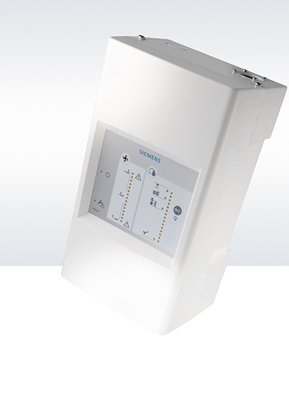The Building Technologies Division of Siemens has launched two new innovative smoke detectors based on the aspiring smoke detector (ASD) model.
 New Aspirating Smoke Detectors from Siemens
New Aspirating Smoke Detectors from Siemens
The new detectors are labeled FDA221 and FDA241. They can operate even under rough conditions and facilitate not just early detection of fire but also possess the capability to differentiate between steam, smoke and dust.
A typical ASD analyzes the air in the surrounding area for smoke particles by sampling air continuously via an air sampling pipe network. Existing models of ASD are prone to triggering false alarms as they do not have the capability to distinguish between smoke and dust particles. The FDA221 and FDA241 ASDs from Siemens operate on optical dual-wavelength detection technology which employs infrared and blue waves of light. The differentiation between smoke and dust particles is enabled by determining the dimension and concentration of sampled particles on the basis of the wavelengths of different light. The two models of smoke detectors are thus impervious to external interference.
The FDA221 model equipped with a programmable sensitivity of 0.2%/ to 20%/m is suitable for an area of 500 m2. The FDA241 model featuring sensitivity of 0.03 to 20%/m can be fitted for an area of 800 m2. This model also features three modes that can be preset, namely, robust, auto-discrimination and ultrasensitive. The FDA241 also incorporates a programmable purge feature that comes into operation when the system detects pipe contamination. A host of information such as dust and fine dust concentrations, smoke and airflow rate can be provided as output by means of a programmable output of 4 to 20 mA. The easy-to-install detectors are protected from internal soiling by building them around a patented detection compartment. The detectors are compatible with current Siemens fire detection systems.